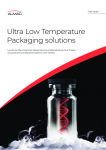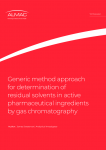Minakem: collaboration could elevate pharma supply chain

Outsourcing-Pharma (OSP) recently checked in with representatives from Minakem (MK), a European contract development and manufacturing organization (CDMO) on the current state of the global pharma supply chain.
Managing director Thierry Durand (TD) and Yann Bayeux (YB), supply chain and purchasing director, team shared views on the most pressing challenges the industry faces, as well as potential ways the significant problems could be reversed.
OSP: In your opinion, what are some of the most notable/significant challenges or problems with today’s pharma supply chain? Where are the most glaring problems and vulnerabilities?
TD: The COVID-19 pandemic has brought to the surface several very glaring challenges for western countries in respect to the pharma supply chain. The pharma supply chain is too heavily reliant on Asian suppliers, especially for active pharmaceutical ingredients (APIs); this reliance led to a shortage of chemical APIs in western countries and lack of stock.
European pharma companies are basically absent from the supply of generic products, where more than 80% come from Asia – with China supplying the majority of APIs. The bottom line is that far too much along the whole supply chain is sourced from Asia from the raw materials to the API and chemicals at the end of supply chain. We need to balance our risks and aim for local supplies and strategic stocks.
OSP: What are some of the ways in which individual companies, or the industry in collaboration, could work to help avoid or eradicate these supply-chain challenges?
TD: Individual companies have several means to avoid or eliminate supply-chain challenges:
- Have a full mapping of your supply chain (“visual” supply chain) to build your risk analysis
- Strengthen their initiatives to build stock of strategic supply, independently of the supply location
- Develop multiple sourcing in different locations in Asia and the EU
- Develop in-house or integrate a very local supply to avoid transportation limitations
As for critical medicines supply chain (API or FP) challenges, one could imagine two things for industry collaboration. The industry could be organized into a collaborative rather than a competitive network of companies in territories where the allocation of products would be established according to their capacity to supply rapidly to communities. This would be done in collaboration with authorities and pharma/chemical associations.
Pricing could be established between industry and authorities with funding available to support this supply chain (development, capex). Authorities within the industry could establish quotas of supply from various locations.
OSP: Do you see much in the way of collaboration on drug material supply and production in the industry?
TD: We are not there yet in terms of a collaboration among industry companies on facing supply chain issues of generics. Competition is dominant. Supplying new products is a main objective. Pharma customers are able to organize a complete supply chain through different companies for complex products and organizing competitors to work together to ensure smooth development and supply of product and services from clinical to commercial stage.
The “alliance” is indeed the different contracts the pharma customer has with its various suppliers. The pharma customer is the link.
OSP: Why might more alliance among stakeholders in Europe (or elsewhere) be beneficial to pharma companies and their partners?
TD: Well, consider research conducted in a collaborative effort between academia and private institutions compared to more traditional research conducted within one group. The difference is huge in terms of creativity, speed and value generation.
You also have IP and economic concerns in these collaborative networks that have been properly addressed. You could extrapolate this to pharma supply chain stakeholders with benefits to pharma companies and finally the end patient; this is currently true and in place for pharma research, but we are not yet at the alliance level for the supply chain.
OSP: How could such collaboration be created and encouraged?
TD: This type of collaboration would need to be a EU-led initiative that would engage nation states, banks, investors and industry. It could be similar to what India is going to do to take back integrated API manufacturing from China by investing in the order of more than €1 billion to create additional chem parks.
There are already initiatives under discussion about capex funding. There should be also agreements about API prices and volumes that would be sourced from EU to make sure that the initiatives are organized and aligned.
OSP: What if anything are leaders with Minakem doing to help bring this collaboration about?
YB: Minakem adopted a risk mitigation program 18 months ago; which consisted of ranking in order of priority the most critical of each of our raw materials and better addressing how to diversify outsourcing and contractual needs in order to implement safety stocks. Diversifying our source of raw materials and their geographical locations enabled us to shift suppliers and maintain delivery.
Regarding COVID-19, our main challenges related to indirect purchases. We were confronted with a dramatic disruption in the supplies we use in production, such as protective masks, which were suddenly requisitioned by governments. On short notice, the purchasing department, in collaboration with SHE (Safety, Health & Environment), identified alternatives that were not in competition with other market applications.
COVID-19 required a new level of anticipation and responsiveness. We have launched a Supply Chain DRIVE project to align our planning (raw material deliveries, projected stocks, production, QC, QA) with our financial performance and OTIF (On Time In Full) enabling multi-scenario simulations; the ultimate objective is to provide the best service to our customers by satisfying their expectations, while maintaining strong business performance and growth.


















